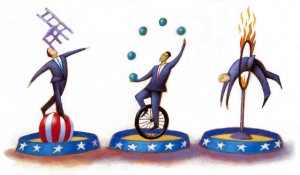(Prologue: I’ve got first-hand experience that a real understanding of the laws of karma can substantially change our lives for the better. I created this weblog to share information and personal experience with others. May it be of benefit!)

© The New Yorker Collection 2000 David Sipress from cartoonbank.com. All Rights Reserved.
Meditation is no longer a strange word. Scientists have done many studies to show the benefits of meditation on our health, both physical and mental.
This post is, however, not directly about the health benefits. It is about the misconceptions around meditation. It is necessary to deal with this because meditation is one of the tools that can help us to change the course of our lives, our karma. And if we are operating on misconceptions, then we cannot make proper use of this valuable tool.
Sakyong Mipham Rinpoche provides the context for this post
“If we follow thoughts back, we can see that they stem from an embedded karmic situation that has gone on for a very long time.”
“The point of buddhism is that we are creating future actions. We can change the course. We are not stuck in our karma.” (Classes 4 and 5)
By meditating, we see how the mind that created our karma is the same mind that can cut the creation and maintenance of that karma.
Before we get into details about how meditation can cut karma and allow us to control our lives, I want to first dispel some common misconceptions: Read the rest of this entry »








 fictional
fictional